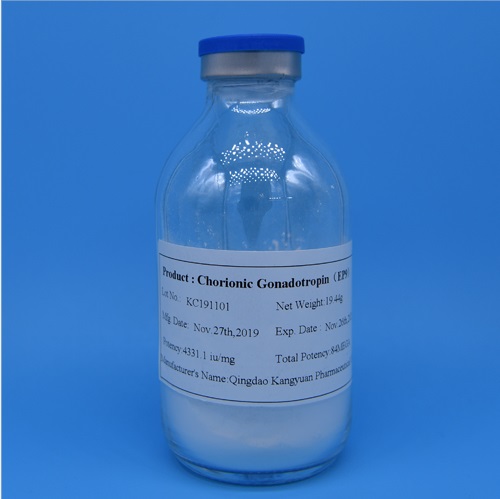Human Menopausal Gonadotropin (HMG) is a hormone medication that has
revolutionized the field of reproductive medicine. It holds great significance
in assisting women who face challenges in conceiving and has become a powerful
tool in fertility treatments.
HMG is derived from the urine of postmenopausal women. It contains a
combination of follicle-stimulating hormone (FSH) and luteinizing hormone (LH).
These hormones play crucial roles in the ovulation process, stimulating the
growth and maturation of ovarian follicles and triggering the release of
eggs.

In the realm of assisted reproductive technology, HMG is widely used in
ovarian stimulation protocols for women undergoing procedures like in vitro
fertilization (IVF) or intrauterine insemination (IUI). By administering HMG,
healthcare professionals can enhance a woman's natural fertility potential and
increase the chances of successful fertilization.
The administration of HMG involves a carefully planned protocol tailored to
each individual's needs. It typically begins on the second or third day of the
menstrual cycle when the ovaries are in a resting state. Regular monitoring
through blood tests and ultrasound scans is necessary to assess the response to
HMG and adjust the dosage if needed.
HMG is usually self-administered through subcutaneous or intramuscular
injections. This allows patients to have control over their treatment and
minimize the need for frequent visits to medical facilities. However, it is
essential to follow the prescribed dosage and frequency, as excessive
stimulation can lead to adverse effects such as ovarian hyperstimulation
syndrome (OHSS).
The success of HMG in increasing the chances of conception has been
remarkable, especially for women with ovulatory disorders or poor ovarian
reserve. It offers hope to those struggling with infertility by boosting the
number and quality of eggs produced during each menstrual cycle.
Moreover, HMG has played a pivotal role in overcoming male factor
infertility. In cases where the male partner has low sperm count or reduced
sperm motility, HMG can be used in conjunction with other assisted reproductive
techniques to achieve conception.
Despite its many benefits, HMG is not without its limitations. Like any
medical intervention, it carries certain risks and side effects. These can
include injection site reactions, abdominal discomfort, mood swings, and the
possibility of multiple pregnancies due to the stimulation of multiple
follicles.
In conclusion, Human Menopausal Gonadotropin (HMG) has transformed the
landscape of fertility treatments. Its ability to stimulate the ovaries and
enhance the chances of conception has brought new hope to individuals struggling
to conceive. As this powerful hormone medication continues to evolve, it paves
the way for further advancements in assisted reproductive technology, offering a
brighter future for those desiring to build a family.